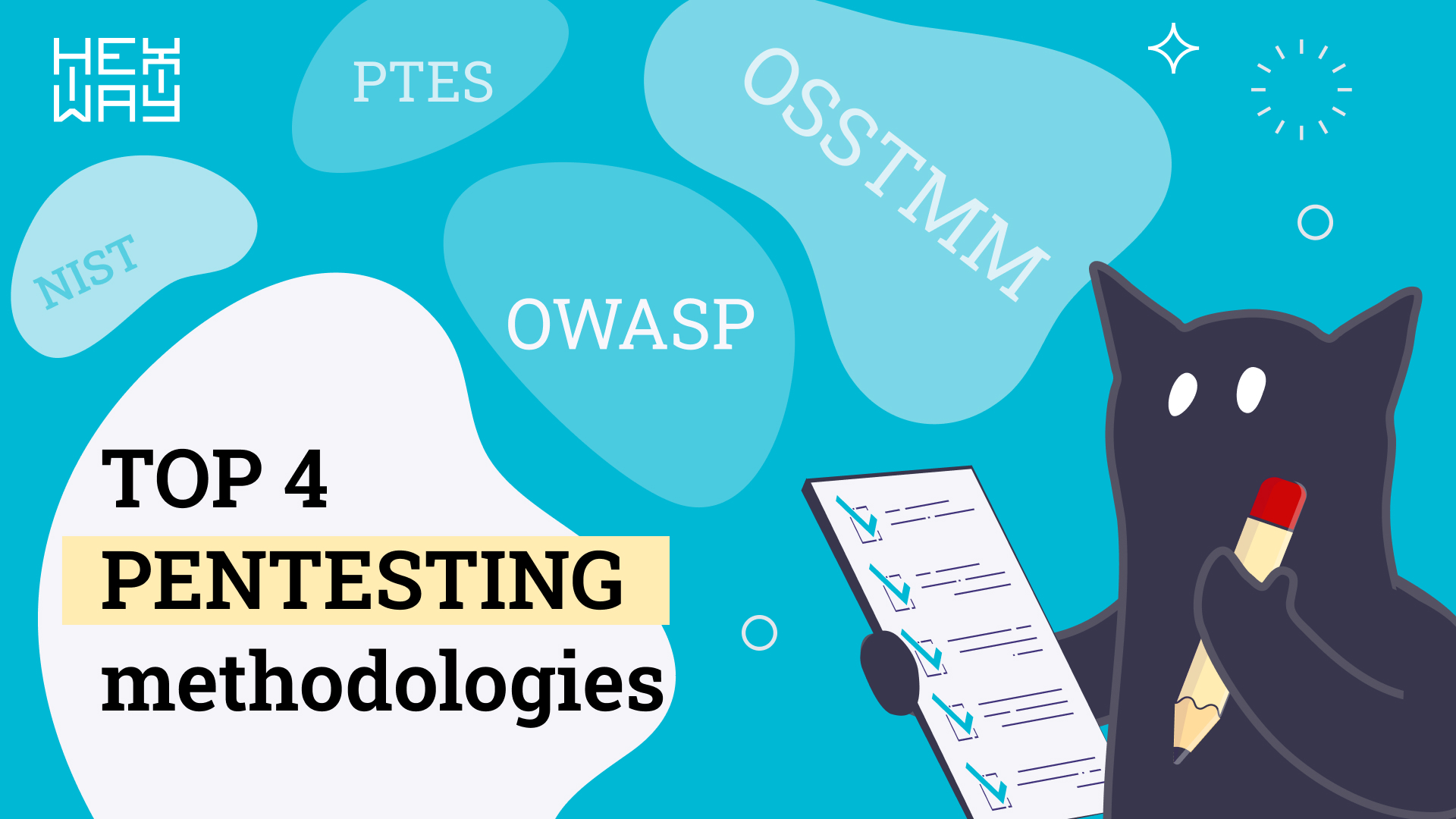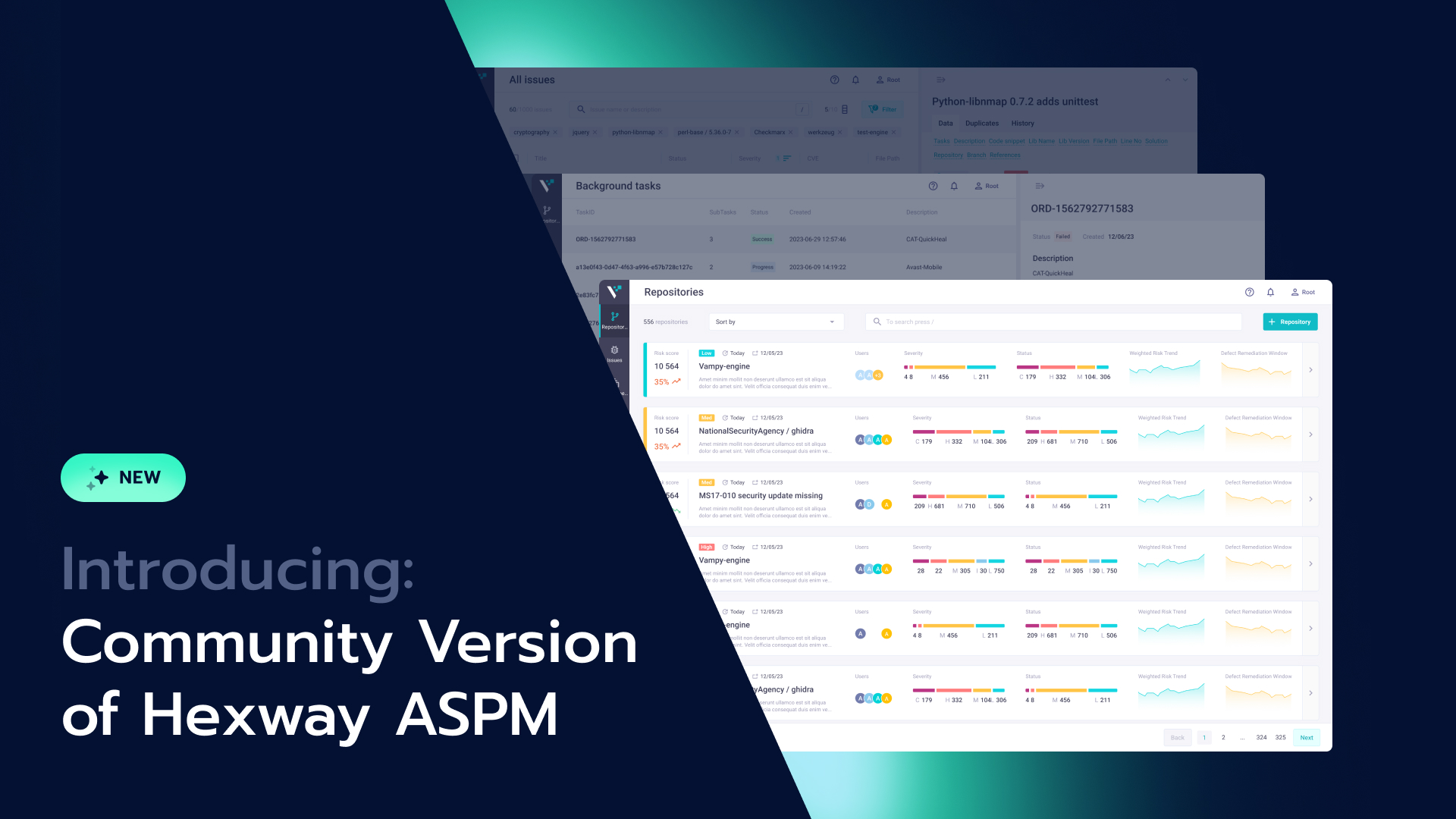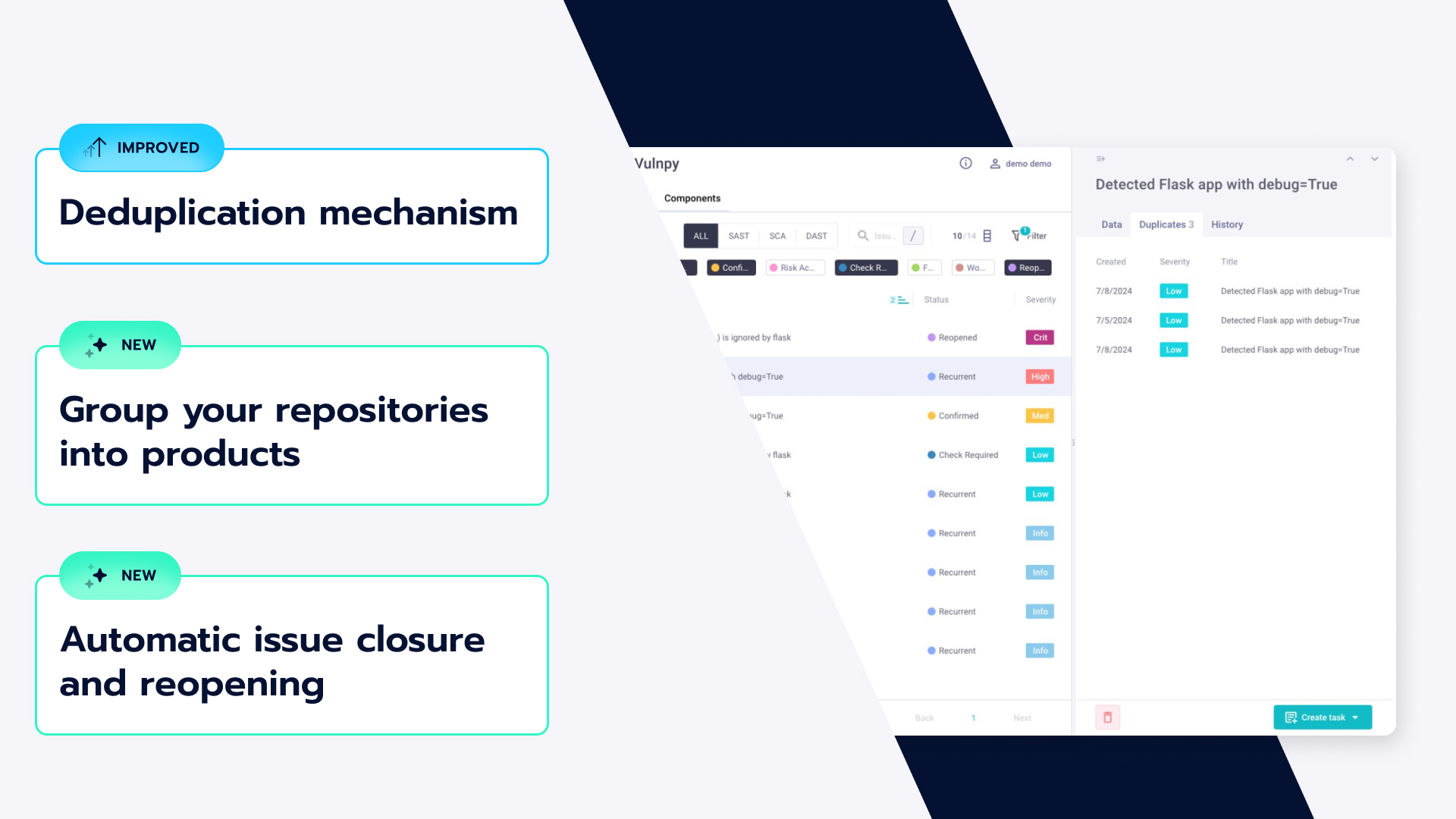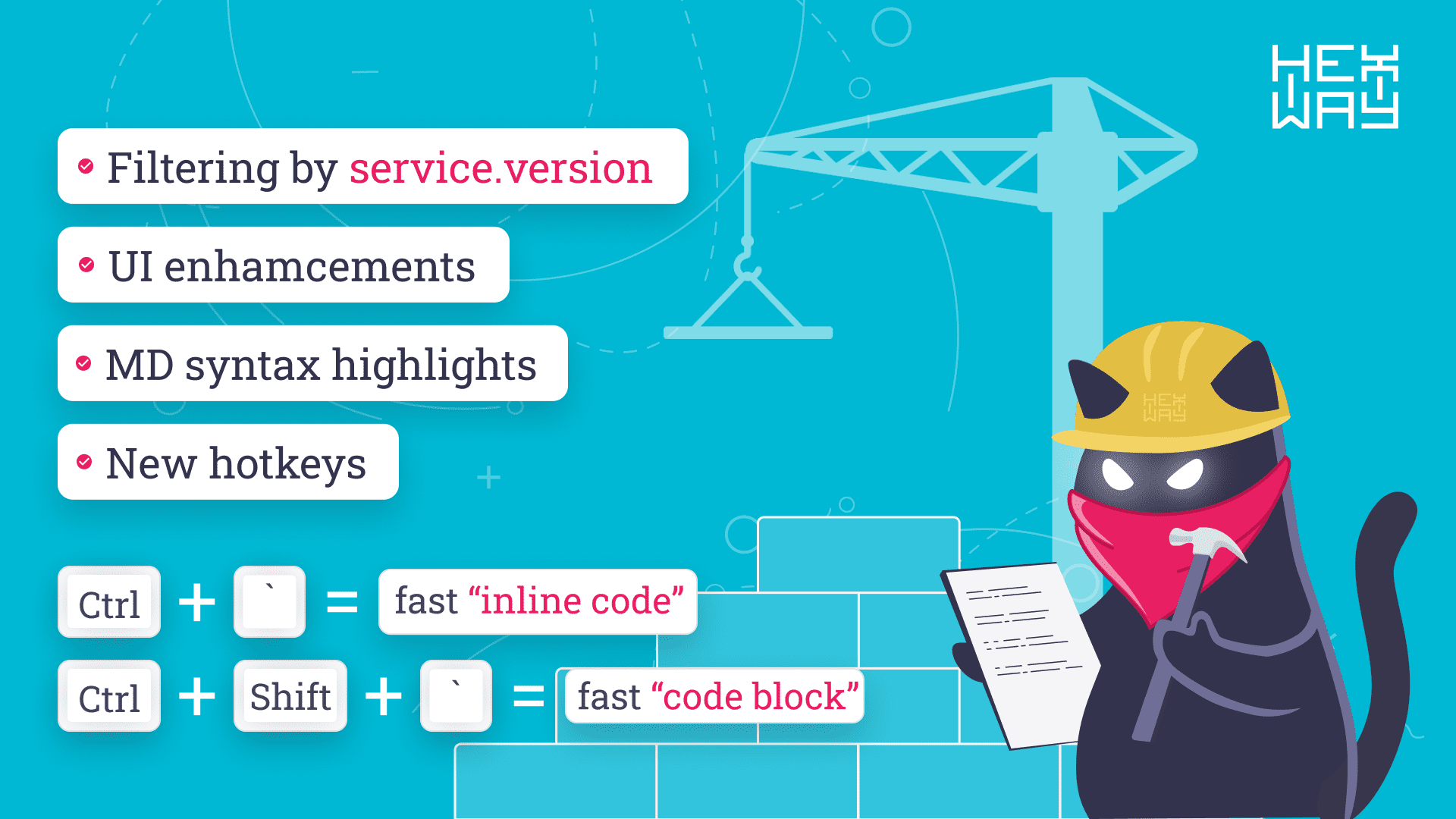Top 4 Methodologies for Efficient Penetration Testing

Penetration testing is a proactive security test where a pentester or ethical hacker deliberately attacks the organization’s network and systems. The goal is to proactively find and fix existing security gaps before they can be exploited by bad actors. Over time, regular pen tests enable organizations to address cybersecurity vulnerabilities and strengthen their defensive capabilities.
Organizations can leverage many methodologies to plan, organize, and execute pentests. This article explores four such industry-accepted methodologies, that can be used while doing penetration testing. Especially because Hexway Hive checklists allow you to do so.

Open Source Security Testing Methodology Manual (OSSTMM)
Maintained by the Institute for Security and Open Methodologies (ISECOM), the OSSTMM is a peer-reviewed pentesting methodology and best practices framework that enables organizations to correctly conduct pen tests right at the operational level.
It enables pentesters to identify vulnerabilities from various possible attack angles. To create these tests, pentesters first need to track their test target, understand which parts of the target they will test, discover existing security controls, and also clarify what they will not test. Developers and IT teams can also use OSSTMM to strengthen networks and firewalls to boost enterprise security.
Since the end of 2000, the OSSTMM has evolved into one of the most well-recognized pentesting methodologies because it:
- Provides comprehensive advice on how to identify security vulnerabilities from multiple angles of attack
- Highlights best practices to boost enterprise network security
- Can be easily customized to fit the organization’s specific business needs or context
- Supports many organization types and sizes
Organizations can leverage the OSSTMM to conduct pentests encompassing a wide range of assets, including:
- Cloud computing
- Virtual infrastructure
- Messaging middleware
- Mobile devices
- Trusted computing resources
- Wireless networks
- Data networks
OSSTMM provides multiple attack surface metrics and a graphical dashboard to conduct and manage both internal and external testing of the organization’s network infrastructure. It enables security personnel to define the rules of engagement for performing security audits. They can even integrate the methodology with existing policies and security standards to ensure thorough security testing and consistent compliance with regulatory requirements.
Open Web Application Security Project (OWASP)
OWASP provides a set of globally-accepted standards and guidelines to assess the security of internal and external web and mobile applications. With OWASP, pentesters can find vulnerabilities in these applications, identify any logical errors, and understand the resultant security risks stemming from unsafe coding practices.
The framework provides a comprehensive list of vulnerability categories and includes suggestions to mitigate or remediate them. It also provides a pentesting checklist to help pentesters understand which issues they should check for. It also provides a guide to setting up pentesting processes and developing security metrics within the organization. Finally, it acts as a useful starting point for creating request for proposal (RFP) documents to request services from external vendors and ensure that they adhere to the organization’s security requirements.
Over time, organizations that use the OWASP framework can create a security-focused software development culture that consistently produces more secure code and thus, more secure applications.
Penetration Testing Execution Standard (PTES)
The PTES provides a common “language” to guide pentesters on the scope, procedures, and tools for pentesting. It also recommends that they follow a systematic process consisting of seven phases:
- Pre-engagement interactions
- Intelligence gathering
- Threat modeling
- Vulnerability analysis
- Exploitation
- Post-exploitation
- Reporting
Pentesters who follow this methodology get detailed guidelines for every step of the testing process, right from initial communication, intelligence gathering, and threat modeling, to vulnerability research, exploitation, post-exploitation, and finally, reporting.
With PTES, testers can better understand the tested organization and the context for the pentest. They can also utilize their technical security expertise to conduct a thorough pentest, report on the entire process, and provide actionable recommendations. Ultimately, by using PTES, pentesters can provide tangible value to business users and help guide their decision-making regarding security investments.

National Institute of Standards and Technology (NIST) Cybersecurity Framework (CSF)
The NIST’s CSF is not a specific pentesting methodology, but a set of general guidelines to help organizations improve their overall cybersecurity. Nonetheless, pentesters can leverage its standards, guidance, and proven best practices to:
- Identify the cyber risks relevant to the enterprise
- Plan cybersecurity and incident response
- Configure the technologies and tools for penetration testing
The framework is based on five core functions that enable pentesters to systematically conduct pentests:
- Identify: Understand critical enterprise resources and related cybersecurity risks to prioritize risk management and security efforts
- Protect: Implement safeguards to secure assets, and limit the impact of a cybersecurity event
- Detect: Uncover malicious activity that may indicate a cybersecurity risk
- Respond: Act appropriately when a security incident occurs
- Recover: Restore any capabilities impacted by a security incident
But despite these standard guidelines, the CSF is not a one-size-fits-all framework to manage cybersecurity risk or conduct pentesting. If anything, the NIST recommends that organizations tailor their recommendations based on their unique risk profile and specific service delivery needs.
Conclusion
Established pentesting methodologies provide a proven way for organizations to test their own security posture and fix security gaps that leave them vulnerable to the bad guys. They can implement the methodologies discussed above “out-of-the-box”, or tailor them to match their specific IT infrastructure and cybersecurity goals.
If you use these pentesting methodologies or want to implement them into your SDLC, try Hexway platform. And to know how you can improve your pentest routine, click here for a free demo of our easy-to-use, self-hosted Pentest as a Service (PTaaS) platform.












